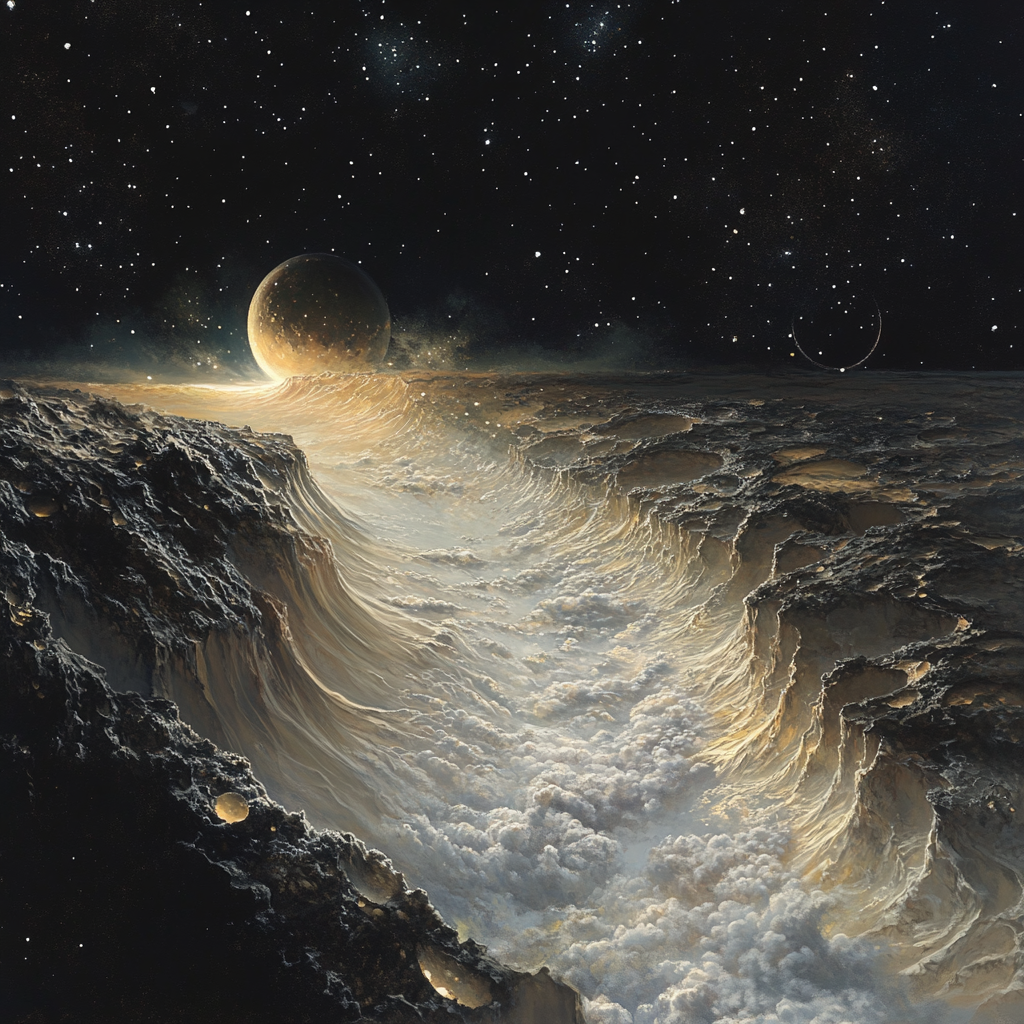
Explanation of Vesta’s Enigmatic Features: Saltwater Involvement
In the grand theater of our infinite universe, the stage is graced by countless celestial performers, each boasting an array of mysteries worthy of our curiosity. Take Asteroid Vesta, for instance. This rocky giant is not just a hunk of space debris lazily floating between Mars and Jupiter—oh no, Vesta is the site of intrigue with its baffling gullies and fan-shaped deposits, features that look like they’ve lifted a page out of a cosmic watercolor painting that no one's quite deciphered yet. But lately, a bold hypothesis has strutted onto the cosmic catwalk: could saltwater be the lead actor behind Vesta's strange features? Buckle up as we dive into these murky waters!
Let’s kick this off with a little backstory on Vesta. Picture it: an ancient celestial body sitting in the asteroid belt like a wise old sage, encased in a shell of geological secrets. Scientists have been scratching their heads over Vesta for decades, piecing together its past with the fervor of detectives chasing after elusive clues. However, it was only recently, amid bustling labs and animated discussions, that the idea of salty water flowing across Vesta’s surface started to bubble up.
Now, hang on because things are about to heat up! You see, the asteroid is a veritable punching bag in the solar system, enduring impacts from colossal space rocks hurling through the void. These strikes aren’t merely destructive events; they could be pivotal moments that reshape landscapes as we know them. When these giants collide with Vesta, they unleash an incredible amount of kinetic energy, which can melt any ice that may be lurking beneath the surface, leading to physiological mayhem in the form of briny water flows. Yes, folks, it’s not just your average splash!
Imagine that moment of collision, when Vesta's tranquil demeanor is shaken to its core, and from beneath the surface, water laced with salt emerges, carving out gullies and sculpting landscapes that evoke the artistry of erosion we see here on Earth. A visual feast of gullies, reminiscent of rivers winding their way through parched land, triumphantly appears, albeit for a limited time. The catch? Vesta’s small size and lack of an atmosphere mean that any such water would evaporate or freeze faster than you can say “gravitational pull.” An impatient cosmic artist, it seems!
Now, hold onto your hats for the next act: the scientific validation of this audacious idea. This isn’t just wild speculation tossed around at a bar over late-night drinks. Detailed observations and simulations underscore a wealth of evidence supporting the saltwater hypothesis. The data harvested from NASA's Dawn mission, which not so long ago orbited Vesta, have been pivotal in peeling back the layers of this cosmic onion. Through these lenses, scientists observed tantalizing details of Vesta's surface features, which now appear to be the trophies of salty water flows. Think of it as science’s way of saying, “Hey, there’s more to explore beneath the surface!”
As theories unfold, one cannot ignore the implications of this revelation. It expands the boundaries of our understanding—not just of Vesta but also of other asteroids and their potential secrets. This leads us into uncharted waters, urging scientists to investigate whether other celestial bodies might showcase similar phenomena. Who wouldn’t want to hold a magnifying glass up to the cosmos, looking for other potential evidence of water and, dare we dream, the hint of life beyond our blue planet?
In conclusion, the notion that Vesta’s surface might have been shaped by the ephemeral beauty of saltwater flows brings a jolt of excitement to our understanding of asteroids. It is a stark reminder that even the smallest and seemingly mundane objects in space can harbor a story filled with drama, complexity, and a vibrant past that begs for exploration.
So, the next time you cast your gaze upon the stars, remember Vesta—not merely a chunk of rock but a celestial canvas that paints the story of cosmic collisions and fleeting streams of saltwater. Each new revelation makes the universe feel a little less empty and a bit more alive, awakening our curiosity to uncover what lies beyond our planet.
Want to stay up to date with the latest news on space discoveries and asteroid research? Subscribe to our Telegram channel: @channel_neirotoken
Let’s embrace the mystery of the cosmos together, for each unturned stone reveals a richer tapestry of understanding and adventure.

